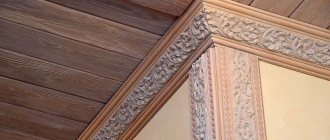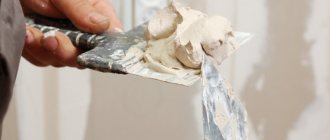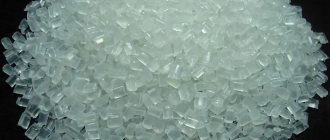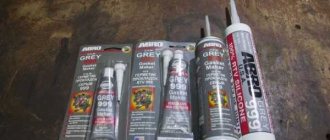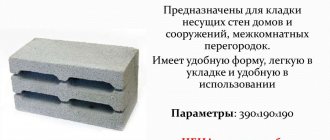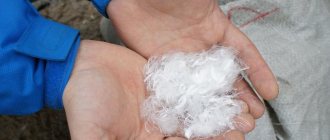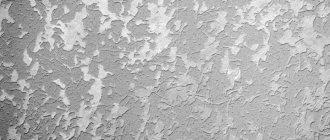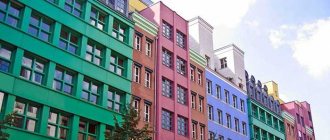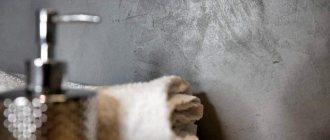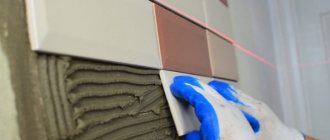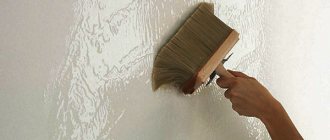The building materials market is increasingly being replenished with new types of products used for the construction of various structures. These include expanded clay concrete blocks with cladding, which are distinguished by their efficiency and economy. Their use significantly reduces the cost of construction work, but the quality characteristics do not change.
Despite their recent appearance, their competitiveness in relation to other building materials is quite high. What is this material, what features make it popular among consumers?
What is a facing expanded clay block?
This building element is made of concrete and expanded clay - a porous material, the main component of which is foamed clay. After undergoing special heat treatment, it hardens and gains strength, but its weight remains light. The porous structure of both components of expanded clay concrete increases strength and reduces the thermal conductivity of finished products.
The front facing side is their distinctive feature. It provides finishing of the wall from the outside, which allows you to increase the speed of construction work. It is characterized by increased resistance to mechanical stress. Due to the increased density of the structure of the front side, the weight of the expanded clay concrete block increases.
This coating is made from hard textured concrete or a similar material with similar properties. Colored pigment, when added to components, makes it possible to obtain blanks of different shades, and the use of special lines allows them to be variably shaped.
Thanks to modern technologies used in manufacturing, various models of blanks are created for finishing the facades of buildings of different styles with imitation of lining, stone, and plaster.
Expanded clay block with finishing coating is massive. It is capable of replacing 4 blocks of regular sizes. It has dimensions 400x400x200 mm. Laying out 1 row allows you to create a full-fledged thermal wall. When constructing buildings in harsh climates, 2 rows of masonry will suffice. Due to the large size of the stone, inconvenience arises during the process of transferring and laying. But the speed of work increases significantly.
GOST standards
State standards regulate the sizes of expanded clay blocks.
| Kinds | Length (mm) | Width (mm) | Height (mm) |
| Wall | 190-390 | 138-288 | 138-188 |
| Septal | 190-590 | 90-120 | 188 |
| Ventilation | 390 | 190 | 188 |
Standard sizes vary over a fairly wide range, and only for ventilation elements are all dimensions strictly defined to the nearest millimeter. Wall ones are also often made with a height of 188 mm, so that everyone is the same vertically. Although 138 mm are also common, the thickness of which allows you to take the stone with one hand.
With a standard height of partition blocks of 188 mm and a typical width of 90, the number of pieces in a pallet depends on the length. With a length of 590 mm, the pallet contains 180 pieces, 390 mm - 312 pieces, 190 mm - 500 pieces. This must be taken into account. When transportation is carried out in pallets, and the truck body can accommodate a certain number of pallets.
Types of blocks
Depending on the area of use, expanded clay concrete blocks are divided into the following types:
- full-bodied. Elements characterized by increased density and strength, capable of withstanding maximum loads. The cost of these products compared to other types of blocks will increase, since their production is carried out using a large amount of raw materials. Scope of application: load-bearing structures;
- slit-like. These are elements with small slot gaps where air circulates freely. Thanks to this property, heat is better retained inside the building;
- hollow. Products with low weight and density, which allows you to keep the room warm for a long time.
Varieties
In modern construction, many types of expanded clay concrete blocks are used. First of all, they are divided into solid and hollow. Empty ones usually have from two to four voids inside, with partitions of different thicknesses. The smaller the number of voids and the thicker the partition, the stronger the block. Of the hollow ones, the most durable are double-hollow ones.
Solid block
In 2- and 3-hollow modifications, the cavities are arranged in a row. The 4-hollow ones can be located either in series or with a cross-shaped partition in the center. In order not to reduce the strength too much, when the cavities are arranged in two rows, their sizes are reduced. Accordingly, the partitions become thicker. This slightly increases thermal conductivity and increases material consumption. But it is possible to build taller buildings; load-bearing structures can withstand loads close in magnitude to those permissible for low-rise brick buildings.
Hollow block
In addition to voids, expanded clay blocks have shallow cracks where part of the mortar that holds the masonry gets in. Protrusions of the hardened cement mixture are formed in the concrete grooves, which increases the resistance to horizontal shear.
Depending on the internal structure and nature of the front surface, the following types of blocks are distinguished:
- privates (P);
- facial (L);
- wall (C);
- septal (P);
- ventilation (B).
The generally accepted abbreviations that appear in standardized labeling are given in parentheses.
Ordinary expanded clay blocks differ from front ones in having a less attractive surface that requires additional finishing. Ordinary masonry is plastered, painted, covered with ceramic tiles or other materials that improve the appearance. Facing blocks do not require finishing, thereby reducing construction costs. But the cost of facing expanded clay blocks is higher compared to ordinary ones.
Wall blocks are used for the construction of walls that bear a relatively large load. They are used to make supporting structures for buildings of 2-3 floors. The septum should not be heavily loaded. Ventilation systems contain technological grooves through which elements of utility networks (electrical cables, water supply and sewerage pipes) are passed. They are also used to form ventilation ducts. The ventilation unit is larger in size than the wall unit, and its dimensions are strictly determined by the standard.
Smoke ducts for stoves and fireplaces cannot be made from ordinary expanded clay blocks. Special refractory ceramics are designed for this purpose.
Expanded clay concrete blocks are also classified according to the method of laying:
- ordinary (PR);
- corner (UG);
- dressings (PZ).
Ordinary ones are intended for laying out straight sections where there is no junction of partitions. Corner ones, accordingly, are laid in the corners, bandaging in places where the partitions adjoin the external walls.
Since expanded clay granules coming out onto the front surface is undesirable, the blocks are made in such a way that a smoother surface without filler grains is visible from the outside. For rows, the “face” is two opposite sides, for corners there are two adjacent sides.
Both solid and slotted blocks are made by vibration pressing in molds. After the mixture hardens, it is kept for 24 to 28 days in storage at optimal temperature and humidity to “mature” the lightweight concrete.
Of particular interest to developers is the innovative 4-hollow block with 90% expanded clay content. It is currently used primarily in Moscow and St. Petersburg. Adding 90% expanded clay reduces the strength to only 25 kg/cm2, but the total weight of one stone is reduced to 8 kg. Long-distance transportation, for example, delivery from a factory to other regions, becomes more profitable.
Specifications
These products are simple and easy to use. There is a wide range of models on the construction market. They are manufactured both in standard sizes and in various configurations: corner or half-shaped.
The blocks have high heat and sound insulation. Thanks to these indicators, it is possible to build narrower walls, reaching a width of up to 40 cm.
Due to the low weight of expanded clay concrete, the load on the foundation is significantly reduced and possible deformations are eliminated.
The outer side of walls built using this material does not require additional finishing, since it already has an outer facing layer in the form of tiles, concrete with sand, and a paint base.
Building elements have:
- fire resistance;
- environmental cleanliness;
- frost resistance;
- moisture resistance;
- low water absorption;
- low thermal conductivity;
- decorative qualities.
Thanks to these indicators, the number of his supporters is increasing every year.
Basic information about the material
Expanded clay concrete, like ordinary concrete, is a product of dissolving cement and sand in water. However, there is a difference in it - the filler, which is expanded clay. The latter is baked clay that takes the form of small spheres that are hollow from the inside. Expanded clay concrete uses granules whose diameter does not exceed 5 millimeters. With high strength, such clay is a fairly light material - 600 kilograms per cubic meter. As with other technologies for creating similar concretes, there is also a need to reduce weight. However, these are far from the only advantages that this material has.
Application
Unlike concrete structures, the weight of expanded clay concrete structures is less. This material makes the structure of the house being built much lighter, while its technical parameters do not suffer.
Thanks to excellent technical data, these elements are used in the construction of cottages. They are used to build country houses, gazebos, bathhouses, and buildings for household needs. It is also a popular material in high-rise construction. Due to their precise dimensions, the blocks combine well with other types of blocks that are used for construction work.
Correctly executed masonry will reduce the consumption of adhesive materials. Expanded clay concrete blocks with cladding and insulation will eliminate the need for finishing and additional insulation.
Products made from facing expanded clay concrete are excellent air conductors, which has a positive effect on the level of humidity in the room. Buildings with walls made of this material are durable and do not require maintenance.
It is successfully used to construct partitions inside the house.
Decorative expanded clay blocks
First, it’s worth saying a few words about expanded clay concrete and its properties. In addition to sand and cement, it contains expanded clay. This material is produced by firing clay in a rotary kiln. As a result of rotation and rapid firing, it foams, turning into porous granules ranging in size from 5 to 40 mm.
Expanded clay itself is an excellent bulk insulation material with many positive properties. The presence of these granules in wall blocks changes their characteristics for the better.
Unlike conventional concrete or cinder blocks, expanded clay concrete products have:
- Less weight;
- The best heat and sound insulation performance;
- High resistance to moisture;
- The ability to “breathe” by regulating the humidity in the room.
Due to its lower weight, it is easier to build walls from this material. But after construction is completed, the question arises: how to veneer expanded clay concrete? After all, you want to give even an outbuilding a decent appearance, not to mention a residential building.
This problem will not arise if you use a facing expanded clay concrete block instead of the usual one. Possessing all the listed advantages, it also performs decorative functions at the same time as load-bearing.
Decorative products are divided into two groups: colored and lined blocks.
Colored expanded clay blocks
They differ from ordinary ones only in color, since inorganic dyes are mixed into the raw materials during the manufacturing process. The block turns out to be painted in the mass, so even small chips do not spoil its appearance.
Otherwise, the colored expanded clay concrete facing block is completely identical to its gray counterpart, both in size and technical parameters.
- Depending on the manufacturer, it may have different geometric dimensions, but the most common are 390x190x190 mm;
- Colored profiled blocks are also produced with a tongue-and-groove system at the ends, during the laying of which the vertical joints are not filled with mortar;
- The surface can also be different: untreated, polished, chipped or with a corrugated texture.
For reference. The price of colored products is higher. If a gray block costs on average 32 rubles, then a colored block costs from 40 rubles. Decorative surface treatments also increase the cost. For example, a besser of similar sizes costs 67 rubles and more.
Expanded clay concrete blocks painted in the mass are used primarily for the construction of non-residential buildings and fences.
Blocks with textured coating
One of the disadvantages of expanded clay concrete is its ability to absorb moisture. And the lining of expanded clay concrete blocks is carried out not only for decorative purposes, but also to protect it from precipitation.
Therefore, colored products without additional external finishing are still rarely used for the construction of buildings in which it is necessary to maintain a microclimate comfortable for human life.
To save not only money but also time on finishing facades, it is better to purchase blocks already lined with artificial stone tiles. Structurally, they have the same composition, and can also be of different sizes, hollow and solid. But one or two sides imitate the surface of materials such as brick, plaster or natural stone.
Advantages
Facing expanded clay blocks have the following advantages:
- high speed of installation work compared to bricklaying;
- the simplicity of the masonry process, which even an inexperienced builder can do;
- thermal insulation qualities. In a building constructed from this material, material costs for heating are significantly reduced, even with a minimum wall thickness;
- no need to finish the outside. If concrete blocks were previously plastered, then thanks to the use of lined expanded clay blocks, the facades do not require additional finishing;
- at a price. The design features of buildings directly affect the amount of costs. For example, load-bearing walls are built using solid products, which increases material costs, but due to their shape, not a lot of them will be required, which will fully justify the costs;
- environmental safety, which gives expanded clay concrete blocks advantages over other cladding coatings;
- high levels of fire resistance, moisture resistance and sound insulation;
- resistance to the influence of low temperatures and their changes;
- light weight;
- efficiency. Masonry using the correct technology leads to a reduction in glue consumption;
- The laying of blocks can be carried out by the owner himself, without the help of specialists.
Features of masonry
It is recommended to use special solutions for laying such blocks . Since there will be no insulation in the future, it is better to use compounds with thermal insulation characteristics. They can also use reinforcing additives.
It is better if the stone is produced with a tongue-and-groove fastening, then the connection of two adjacent expanded clay blocks is simplified.
Since the facade block is the only material and nothing is used after it, it is important to maintain the exact evenness of the masonry . To do this, be sure to pull the string, plumb line, and after laying each stone, check the evenness with a building level. A laser level will provide the greatest accuracy.
At the end of the laying, it is necessary to check all the stones for cleanliness. It is possible that during the work some of the solution got onto the front side, which will spoil the appearance. To eliminate errors, it is better to immediately remove excess glue.
Flaws
Expanded clay concrete blocks are characterized by disadvantages:
- low resistance to dynamic loads;
- relatively low strength, which is a common cause of microcracks on expanded clay concrete walls, which result in general shrinkage of the building and serious cracks appear in the structure of the building. Using a special solution supplemented with a fibrous substance will reduce the likelihood of such problems;
- the inside of the wall requires finishing (plastering), which entails additional costs;
- low adhesive properties of the material. This is the reason for the expenditure of time and money on preparing walls for the purpose of carrying out interior finishing work;
- walls made of expanded clay concrete blocks with cladding require waterproofing and thermal insulation treatment;
- it is possible to purchase low-quality products with broken geometric parameters and a density that does not correspond to the declared one;
- The material is difficult to cut, after which cracks and uneven edges may form. Gaps that appear during the construction of walls are filled with bricks or other building elements.
Expanded clay concrete blocks with cladding are considered the most convenient way to combine construction and finishing work.
This approach will save money when constructing a building and at the same time obtain a high-quality result.
The range of building materials is constantly increasing by manufacturers, which allows everyone to choose products that match the color and texture.
Exterior finishing methods
The main objectives of this stage of work are to improve the exterior of the finished facility, service life without major repairs, and heat conservation. The building's cladding protects the walls from damaging external influences. When constructing a load-bearing foundation, space should be provided for future façade cladding.
Houses made of expanded clay concrete - insulation and finishing
External cladding carries not only a decorative, but also a practical load. Despite the fact that expanded clay concrete is a durable material that can withstand moisture, sudden temperature fluctuations contribute to the gradual destruction of the structure; it is also recommended to strengthen the wall with reinforcement.
Insulation
When working on the facade, the following must be taken into account:
- practice shows that one of the best options for external finishing is the laying of a thermally insulating expanded clay concrete block, which compensates for heat loss up to 75%;
- additional insulation is mineral wool or polystyrene foam/expanded polystyrene;
- the foam is fixed on the cleaned base using an adhesive composition and is additionally secured with dowels. All seams are treated with polyurethane foam;
- mineral wool requires stripping, gluing and reinforcing wall structures to increase the strength of the structure;
- the use of penoizol will achieve sound and waterproofing and reduce thermal conductivity.
Finishing
The basic principles of work are as follows:
- expanded clay block walls lined with brick do not require additional processing, as they have a presentable appearance;
- you can use clinker tiles, stone (artificial or natural), thermal panels or siding;
- The most common option is to cover the walls with cement-sand based plaster.
Natural stone looks noble and aesthetically pleasing, however, when choosing a material, you need to pay attention to its frost resistance. Brick is not inferior to stone in its functionality and aesthetics, but is much cheaper
Facade work using thermal panels is an economical cladding method. The panels consist of polyurethane foam and clinker tiles. This is a lightweight material that has shown effective use on strip foundations; in addition, it is very easy to install.
Ventilated facade systems effectively cover all defects in wall structures and prevent their destruction. Siding can be fragile, and its damage during operation negatively affects expanded clay concrete masonry, which is confirmed by photos and reviews related to houses made of expanded clay concrete blocks.
Wet facade on expanded clay concrete walls
The work is carried out after the walls have been leveled, all cracks have been filled with putty, and excess mortar has been removed.
Sequencing:
- First, insulation is installed, for which you can use facade foam or basalt wool;
- polystyrene foam is fixed with glue and façade dowels, cotton wool is fixed with façade dowels;
- facade fiberglass mesh is used as reinforcement, which is attached using the same dowels with fungi;
- A two-component plaster or primer layer is applied to the surface;
- the plaster is primed with penetrating primer;
- high-quality facade systems help maintain the plaster layer in a semi-plastic state, which guarantees long-term operation;
- After priming, you can begin preparing the surface for applying a decorative or paint coating.
Among all the options, you can use the following:
- decorative smalt plaster;
- “fur coat” plaster;
- decorative plaster “bark beetle”;
- painting with facade paint.
Facade varnishes or other fixing compounds are often applied to the decorative layer to protect the coating from possible destruction and contamination. Reviews for such houses made of expanded clay concrete blocks have been very positive.
Arrangement of plaster “under a fur coat”
Work can be carried out without insulation or on this layer. The method, known as finishing the facade “under a fur coat,” is carried out using spraying or spraying a solution. This method is less labor-intensive than working with other materials.
Special devices have been created for working with the solution. The device can be very simple, manually operated, or more technologically advanced, such as an air gun. At the construction site, the required mobility of the mixture is selected and finishing begins.
Disadvantages of expanded clay concrete:
- The high strength of the block creates difficulties in processing it during construction. To cut expanded clay, you must use a special tool. You can't cut it with a regular saw. Unlike gas and foam blocks.
- To fix anything on such a wall, you need to use dowels with plugs or anchor bolts, first drilling a hole with a hammer drill. Unlike a wall made of wood or plaster blocks. into which you can screw a self-tapping screw or drive a nail with a handy tool. On the one hand, this is a minus, on the other hand, it is a plus for the strength of the material.
- High water absorption requires finishing the façade with moisture-resistant materials immediately after the construction of the building.
- Insufficiently high vapor permeability, which requires good ventilation. Brick is superior to expanded clay concrete in this indicator.
- Expanded clay concrete is more suitable for low-rise construction.
- Unaesthetic appearance, which requires cladding the facade of the building
